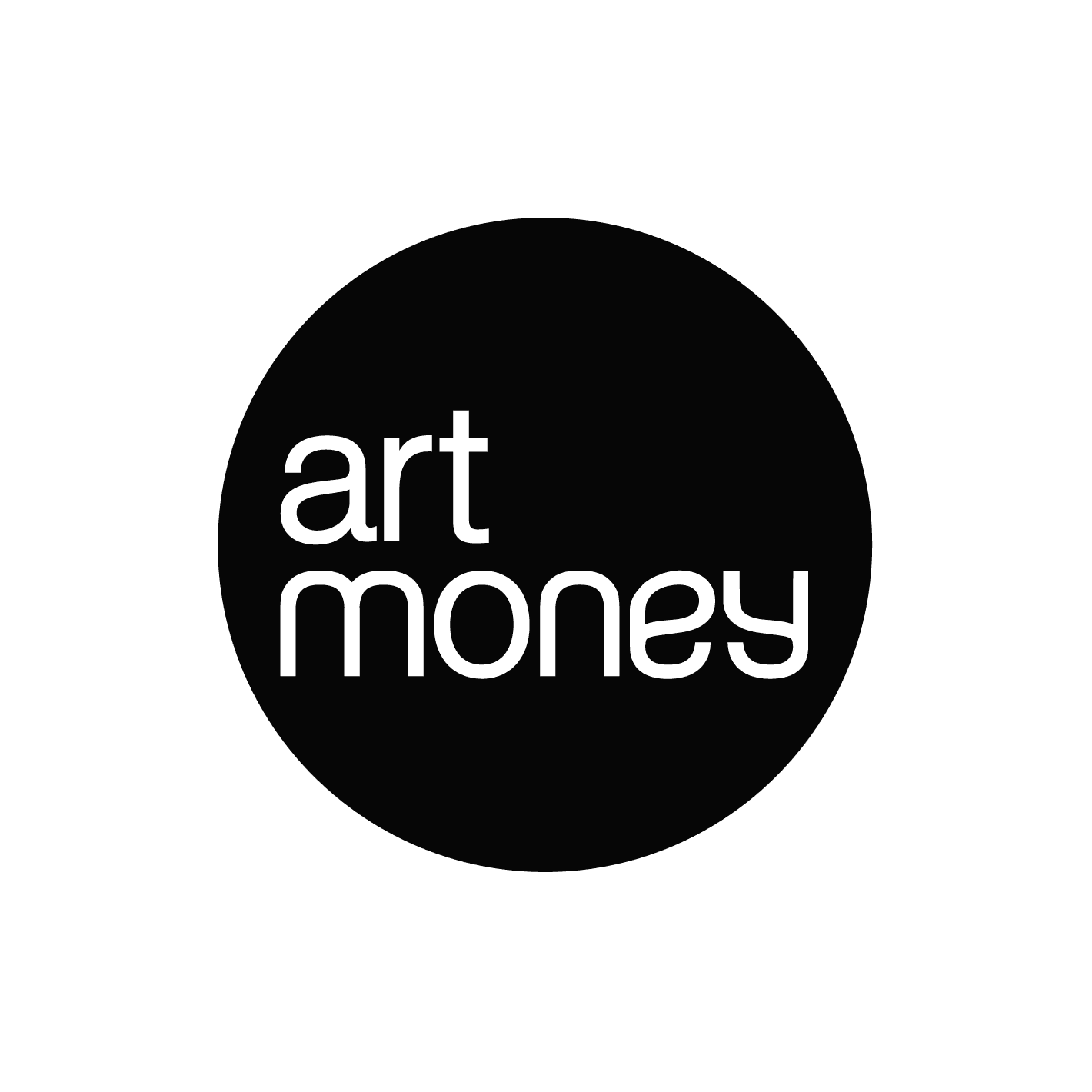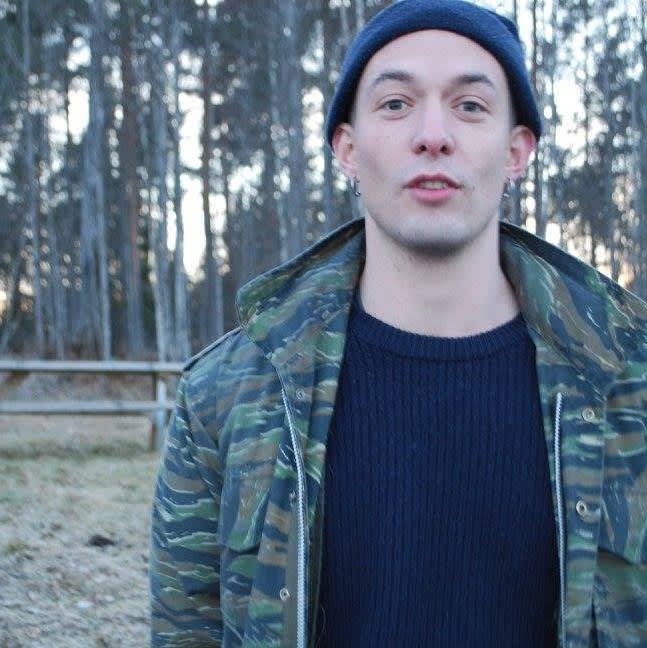
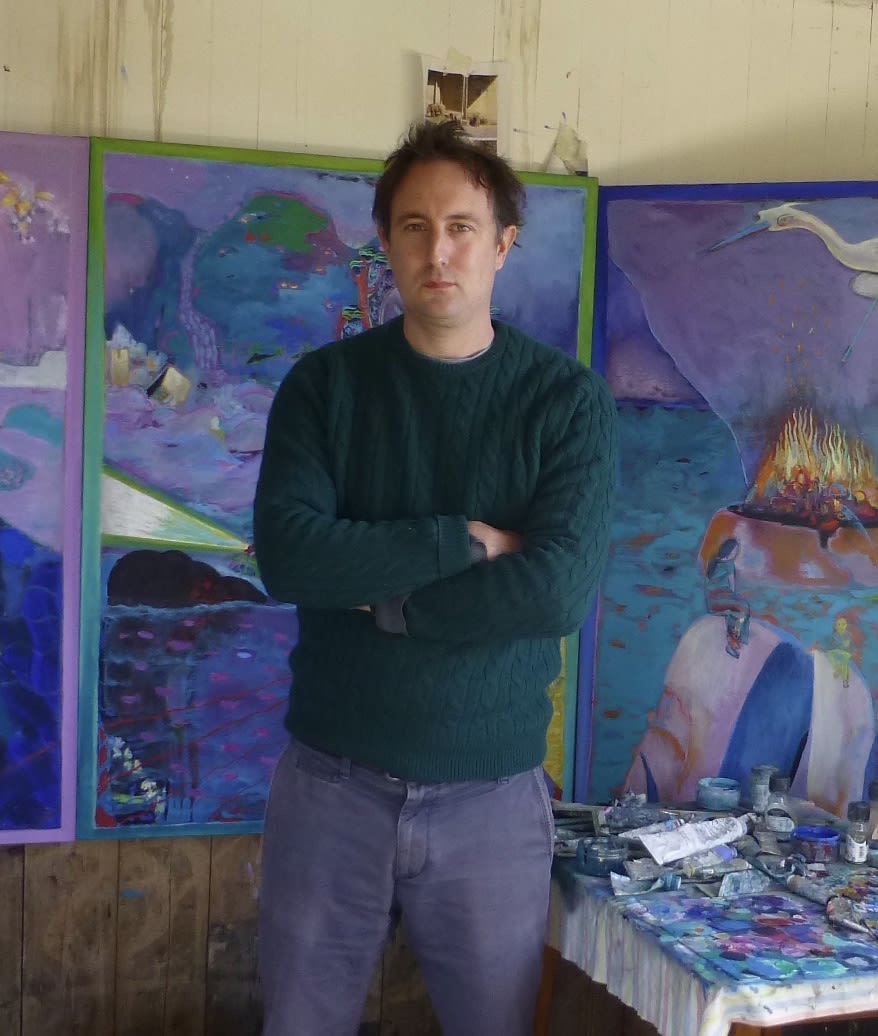
Ben Westley Clarke Oliver Dorrell
Joana Galego Paul Newman
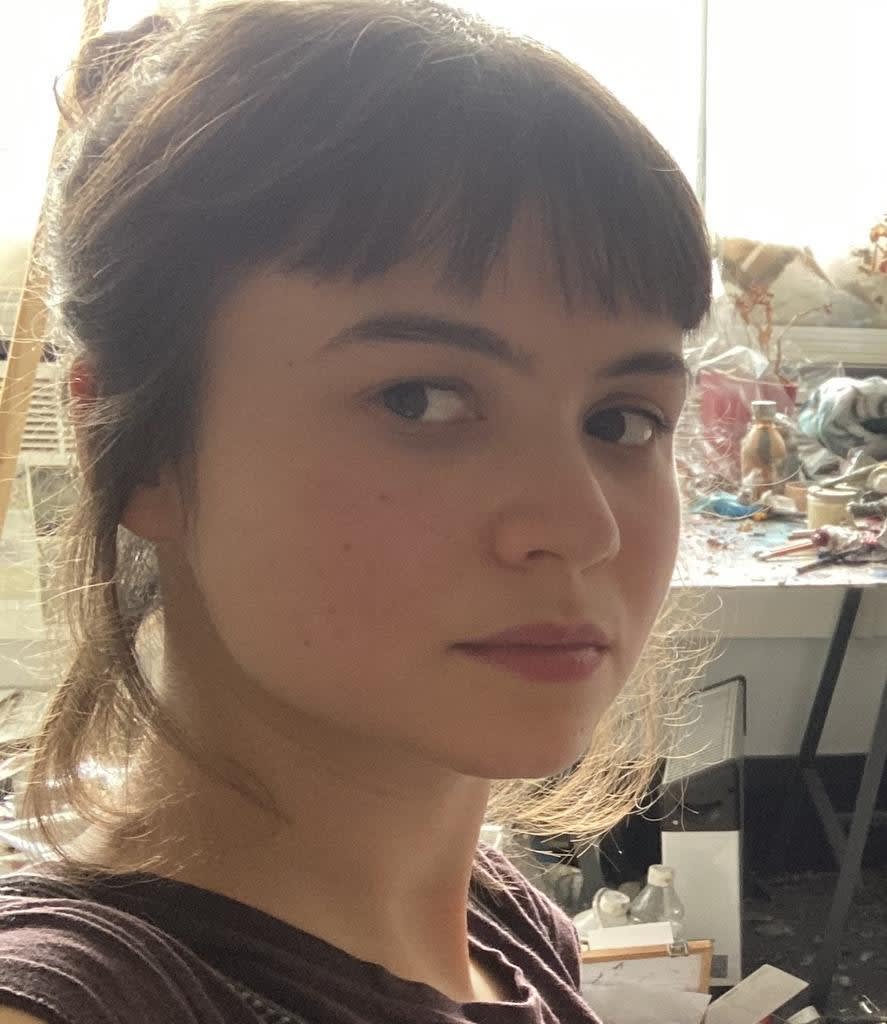
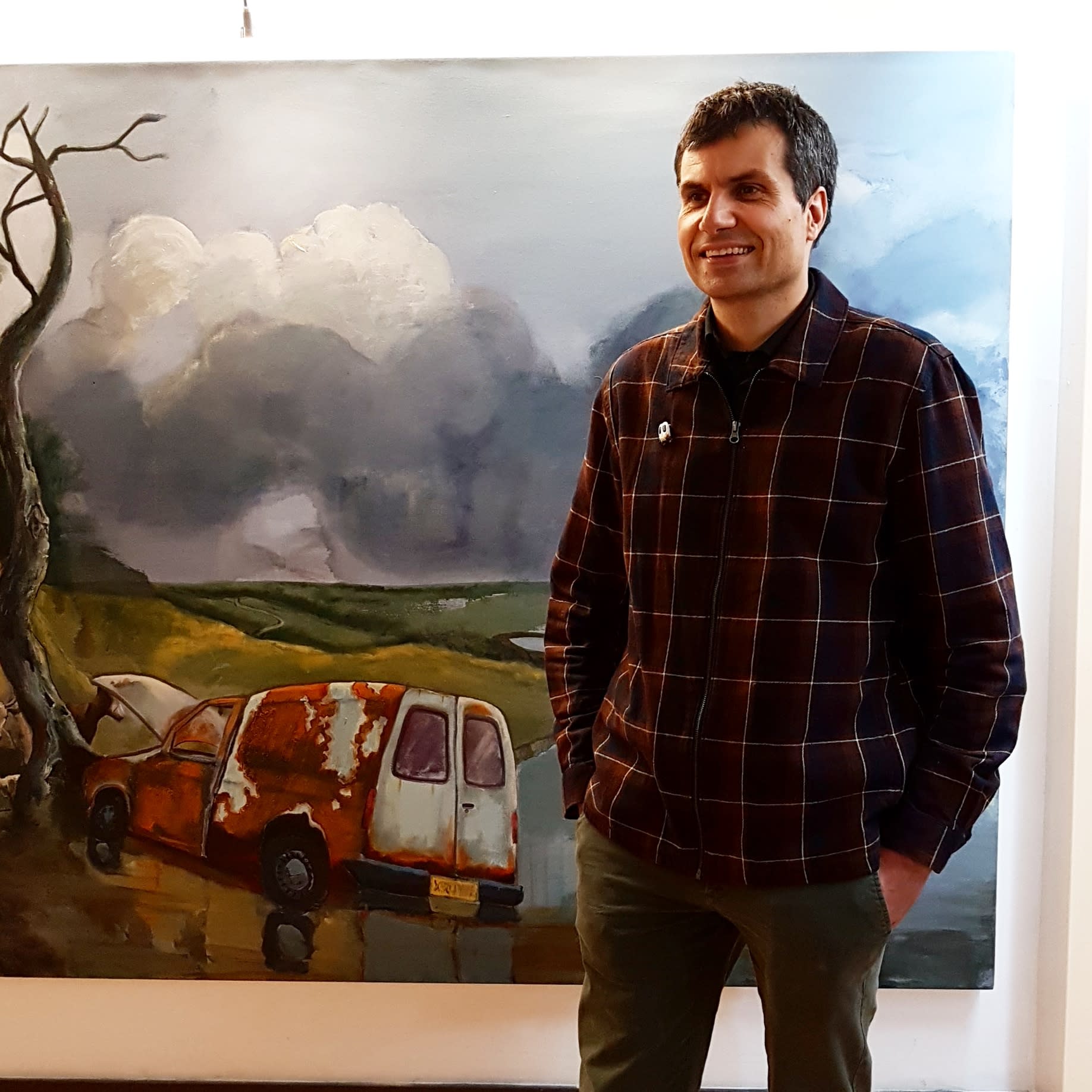
To view the exhibition click Here
Curated by Rosa JH Berland and Vivienne Roberts
Featuring the work of four contemporary artists -
Ben Westley Clarke, Oliver Dorrell, Joana Galego, and Paul Newman,
the exhibition ‘Reflections’ is a selection of painterly reveries as intimate and mystical portraits of desire and despair.
Here in this collection of pictures, we find pastoral interludes under the veil of the mystical, as well as post-apocalyptic and stark scenes of the ordinary rendered in neo-Expressionist and Surrealist form. The artists’ sources are many: contemporary environmental and socio-political crises, city scenes, historic British painting, fifteenth century Indian verse, the work of Arthur Rimbaud, the enduring theme of the journey, the inheritance of Spanish painting as well as the more intimate and autobiographical.
Ben Westley Clarke
In these painterly worlds, we encounter the visualization of both repulsion and desire as seen in the work of Ben Westley Clarke, whose painting is a layering of memory, photography, cinematic impressions, celebrity culture and simple observation. Featured work such as ‘Crack City Rockers’ (2017) explores the harsh brutality of urban life as does ‘Bad Town’ (2019) in bold neo-expressionist style that encounters and revels in the life of the protagonists.
Conversely, in recent work made in Spain, Clarke investigates the concept of painting and its role within society and draws upon the visual culture of Spanish Catholicism as well as historic Spanish painting. Whereas the previous work made in England was made from observation and memory, Clarke’s Spanish painting combines imagery from film as well as notions of popular culture. The artist notes: “It occurred to me that painting was one of the sources of imagery before film, photography, cinema, even gossip magazines and celebrity culture... Perhaps it had a sort of monopoly on the visualisation of desire and people´s dreams in the way that so much advertising imagery does nowadays.”
Works like ‘Noche Toledana’ (2019) and ‘Comedia De La Sed’ (2019) embed such ideas while also exploring autobiographic memory and the burn of desire while stylistically and thematically drawing upon sources such as Arthur Rimbaud’s ‘Comedy of Thirst’ and Pablo Picasso’s Rose Period. The artist notes that this work strives “to provoke desire and affirm belief – to show a parallel, perhaps utopian, world of fantasy. It alludes to the Catholic iconography of Spain’s lineage of painting, notable for its painterliness, chiaroscuro and visual emphasis on un-idealised facts. The subjects feel more unbelievable, dreamed-up or melodramatic than anything previous in his oeuvre, and yet the way they are painted feels more urgent.”
Oliver Dorrell
The work of Oliver Dorrell similarly transports the viewer to imagined places that are likewise linked to specifically visual and literary traditions and sources. Within the aqueous beauty of Dorrell’s painting there are traces of mythical worlds, populated by memories as well as symbols of ancient songs and folktales as seen in imagery like ‘Only You’ (2020). Recalling the imagery of Henri Matisse, Dorrell’s flooded vignettes and scenes of landscape emerge as settings for magical and allegorical narratives.
Dorrell’s paintings included in this exhibition draw specifically upon the artist’s time in India and the study of Indian culture including contemporary painting, traditional miniature painting and ancient epic poetry such as the Mahabharata, the Ramayana and Book Ten of the Baghavata Paruna. A sense of wonderment emerges in brilliant colour in works such ‘Bald Poets’ (2020) and ‘Fishes Swallow Fishes (2020). ‘Fishes’ refers to Bruegel's interpretation of the proverb ‘Big Fish Eat Little Fish’ and the artist notes this proverb is similar to the Indian phrase ‘fishes swallow fishes’ which in turn signifies “chaos and is related as such to the Hindu myth Manu and Matsya.” As such, the artist intends to explore how diverse mythologies understand human desires while also “reflecting on a spiritual and material journey.” A key source for Dorrell’s newest paintings is the work of the fifteenth century Hindu saint and writer Tallapaka Annamacharya (Annamayya) “songs that address both the metaphysical and the romantic.” Such references are interwoven with glimpses of destruction in response to the ongoing crisis on today’s world.
It is this otherworldly capturing of a moment that exists between history and the present, this multiplicity of voice, of experience, of nuance, and of integrations of tradition that distinguish Dorrell’s remarkable work allowing it to become a mystical reflection of a universal experience.
Joana Galego
Similarly, an element of the unfathomable appears in the work of Joana Galego. The artist’s mixed media practice is anchored in the practice of drawing but exists between the effortless loveliness of post- impressionist figural studies and the ache of a solitary life. In her work, Galego interprets the life of emotions within relationships, particularly “the idea of power, submission, vulnerability, miscommunication, loneliness and guilt.”
Galego’s accomplished paintings have a sculptural sensibility, a stillness and depth of emotion that remains at its core mysterious. Images such as 'Mother Fleeing as A Teen' (2019) and ‘Someone Else’ (2019) possess a graceful beauty and complexity that comes from the artist’s ability to evoke the life of the heart. A darkness emerges too in ‘Foreign Bodies’ (2019) an intimate portrait of a couple in an enigmatic nocturnal setting.
Galego’s 2020 painting ‘Bathing’ negotiates a complex subject, that of emotional dichotomies. In this picture, the lake represents the cleansing potential of water, while also suggesting its more ominous association – drowning. Flanked by two figures, the primary male protagonist symbolises the concept of emotional fragility and strength. These qualities are of course, found in all people and remain while in opposition not entirely mutually exclusive. Such ambiguity and duality is indeed an intrinsic part of Galego’s cerebral yet emotive approach.
Images such as ‘Go Gentle’ (2019) recall the figural studies of Cézanne, yet suggest the universal experience of desire, solitude, desire and grief. The artist shares: “Surprise and mystery are important to me both in the process of making and the connection with those who see the works. Painting is a sort of portal to a specific emotional state.”
Paul Newman
While Galego’s work offers entry into the secret life of emotions, Paul Newman’s vision of hybridity and painterly dream worlds have an intoxicatingly colourful and profound hold over his viewers. Newman’s images seem to be either of a post-apocalyptic nightmare or a strangely fantastic and beautiful landscape of dreams. Characters from historic paintings and films interact with industrial landscapes or reveries from classical imagery of the English countryside. In images such as ‘Black Rainbow II, Study’ (2017) patterned areas of abstraction are juxtaposed with an elemental depiction of weather, historic views and strange figures that intrigue and puzzle. Newman builds this sense of disjuncture by layering contemporary elements such as the underpass from the M5 above the canal in Smethwick, and imagery from John Constable’s 1831 painting ‘Salisbury Cathedral from the Meadows.’ In Newman’s accomplished painting, sfumato and the cast of clouds drifts across this nocturnal scene, against the lyrical mark of the painter.
If this work is an evocative dream then ‘Something in the Water’ (2019) is a nightmare. From the artist’s ‘English Gothic’ series, this admixture of neo-Surrealist imagery depicts a Frankenstein like protagonist ‘Frank” in an orange coloured scene of destruction. Newman shares that in this work he has “appropriated a scene from Thomas Gainsborough's 1755 ‘Landscape with Woodcutter and Milkmaid’. Here Frank is substituted for the maid, resting and forlorn in the barren, depleted, Martian like landscape.”
Landscape is also at the centre of Newman’s 2020 collage series ‘After the Storm’, ‘No Thru Road’, ‘Devil’s Island’, and ‘Little Red Dragon.’ These works reflect a number of important themes in the artist’s practice: eighteenth-nineteenth century landscape painting, cityscape demolition, and are described by the artist as “self-contained entities of concentrated turbulence exploring a range of gestural and stylistic motifs within my painting. They are like mini apocalypses before, during and after the storm…”
Indeed, these powerful collage paintings have a disruptive perfection, the composition a fascinating balance of cropping and impasto, landscape and brushwork. ‘Little Red Dragon’ in particular is a masterful work, a sense of destruction is countered by an expressive study of the sky, rendered in an unsettling green. Here the pastoral and the industrial while divided meet, as if in battle.
Westley Clarke, Dorrell, Galego and Newman while divergent in their stylistic approach share a commitment to exploring and reworking visual and literary sources, the history of art, travel and exile, and or personal stories within painting, reflecting as such a universal human experience. In their hands, the play of pigment, chiaroscuro, collage, graphic sensibility and figuration and a sense of the unknowable allows an elemental yet complex beauty to emerge. Within this context, it is the artist’s journey that creates new visions for a contemporary world.
Rosa JH Berland




